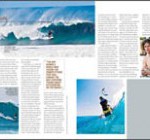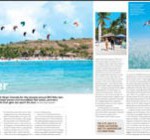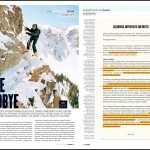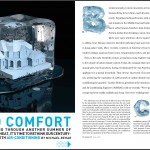 Surf’s Up, Finally Download PDF
Surf’s Up, Finally Download PDF
The world’s first kite competition exclusively for wave-riders debuts.
It wasn’t long ago—perhaps 10 years—when the idea of surfing a wave with a kite was ludicrous. Kites pulled like deranged cruise missiles. Depower was laughable. Getting onto a wave was easy; staying on it was another story. The early generations of kites would stall at low speeds. To keep them aloft, riders needed gobs of speed, which made it impossible to stay on the face of a wave unless the surf was insanely huge (the bigger the swell, the faster it travels). The physics to execute classic moves—bottom turns, off-the-lip carves, and getting barreled—simply didn’t compute. Those who claimed to kite waves were really just outrunning them. Meanwhile, surfers scoffed at the lameness of it all.
But as kiting moved from infancy into adolescence, the desire to catch waves fueled innovation. First came bow kites, in 2005, with hybrid-and delta-shaped sails to follow. The advances led to kites that hovered patiently while a rider dawdled in the surf. Today, kiters are not only shredding the world’s legendary breaks, but doing things paddle-and-wait surfers can only dream of: cherry-picking the sweetest waves in a set—or riding them all—on ordinary surfboards, even strapless. Continue reading









